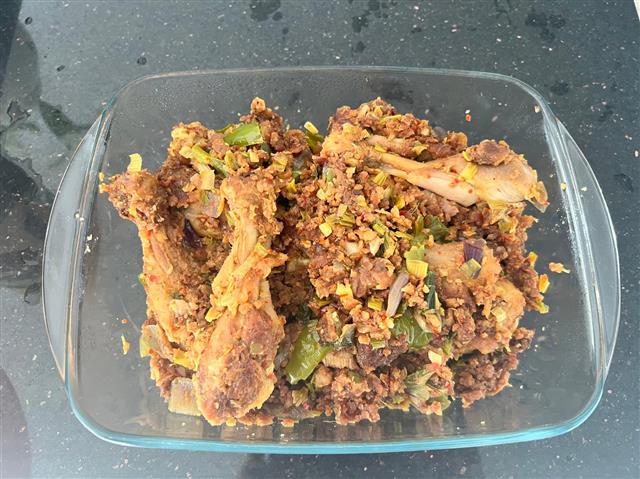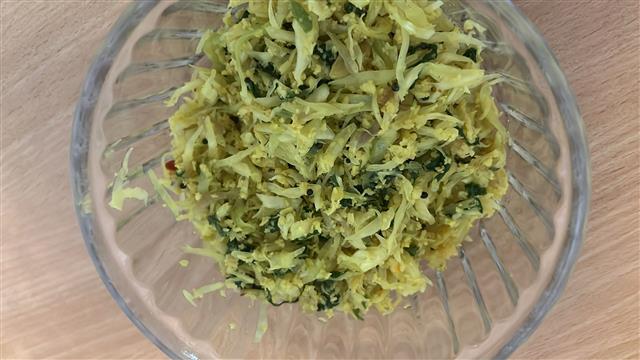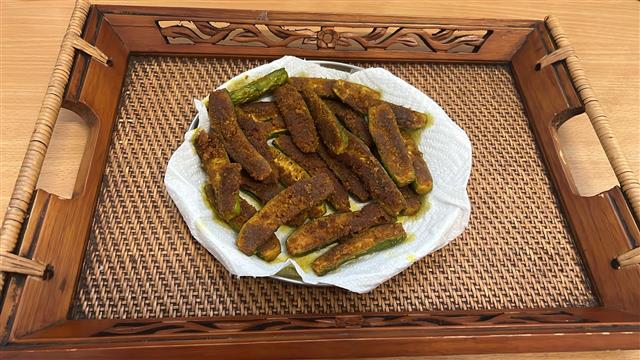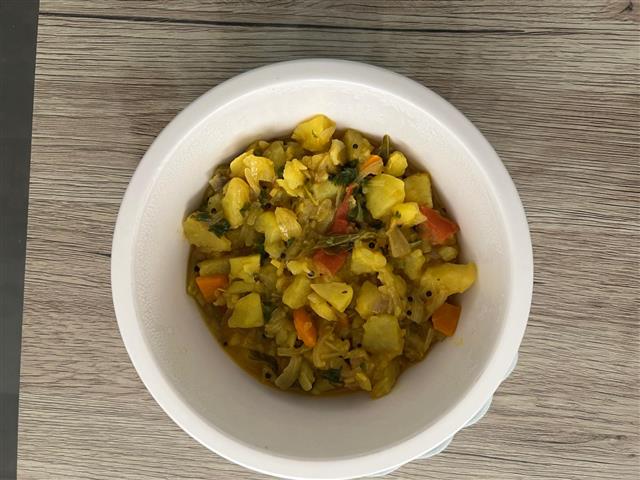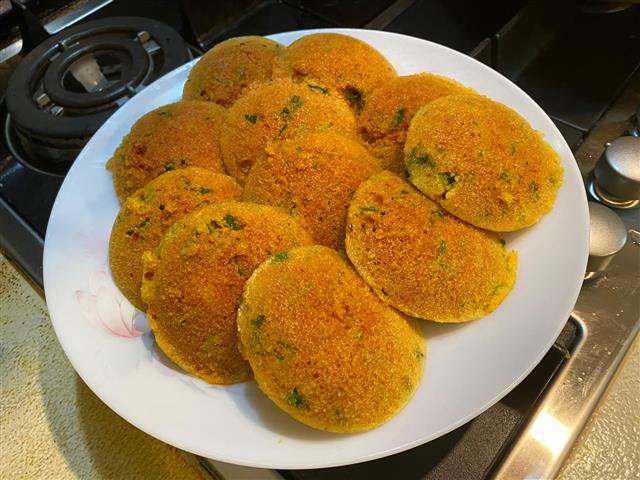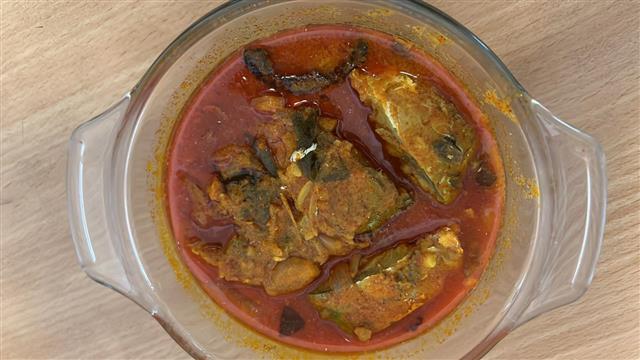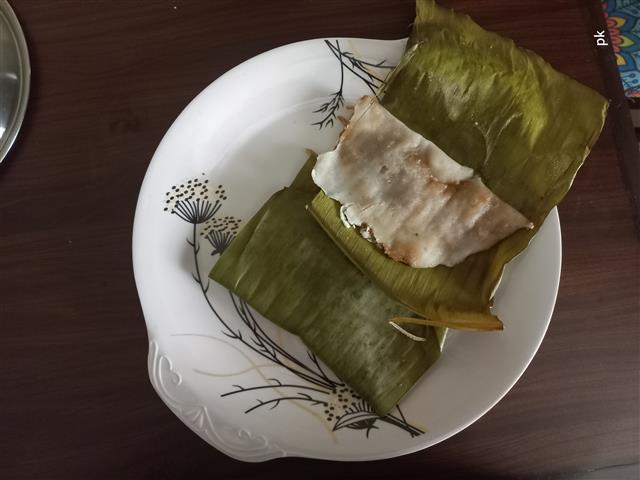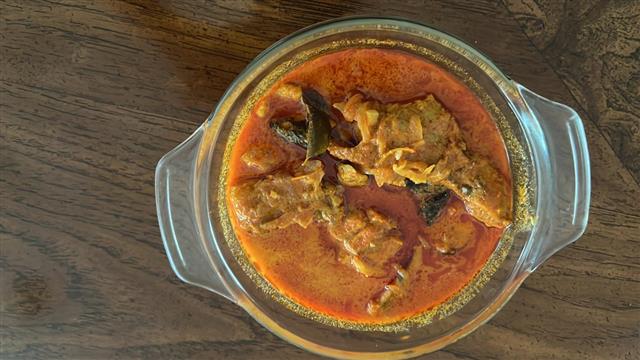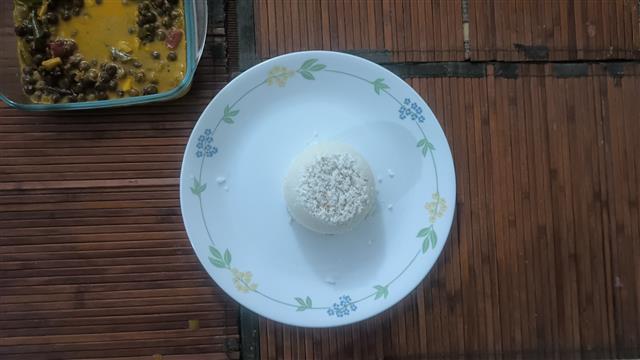
Kappa Meen Avial
(4 reviews)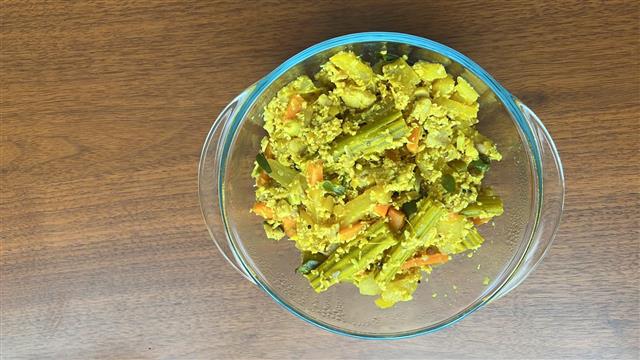
Kappa Meen Avial is a rustic one-pot dish from Kerala that brings together three native elements: cooked tapioca (kappa), flaky fish, and a coconut spice paste.
Vegetables like pumpkin, carrot, and drumstick add volume and colour, while the slight sourness from kudam puli (malabar tamarind) and drizzle of coconut oil complete the flavour.
Traditionally, it is served with spiced buttermilk.
Ingredients
Directions
- Peel and cut the kappa into small chunks. Soak tamarind in a little water.
- Marinate the fish with half the turmeric, chilli powder, and salt along with the optional lemon juice.
- Boil kappa in salted water till just soft or pressure cook for 2-3 whistles. Drain and keep aside.
- In a wide uruli, add drumstick, pumpkin, carrot, kudampuli extract, and the cooked kappa. Sprinkle half the turmeric, chilli powder, and salt. Add a bit of water and cook till veggies are tender.
- In a frying pan, heat 1 tsp coconut oil. Splutter mustard seeds and fenugreek seeds. Pour into the vegetable mixture.
- Add the marinated fish pieces gently. Cover and simmer on low heat till the fish cooks through, about 6 to 8 minutes.
- Meanwhile, grind coconut, green chilli, cumin, and shallots into a coarse paste without water. Add to the cooked fish and mix gently.
- Finish with a drizzle of coconut oil and curry leaves. Simmer for a minute. Let it rest before serving.
Cooking Tips
• Avoid delicate fish that break or fish with bones.
• Soak the kudampuli in water for 10 minutes
• Don't forget to marinate the fish
• Pressure cook the kappa to save time.
Marination Tips
• Add the marinade spices to a bowl.
• Spread the mixture on both sides of the fish pieces.
• Let the fish pieces soak in the marinade for 15 minutes.
How to Serve
• As a Side dish in a meal platter
• With Matta rice and Parippu or rasam
• With Buttermilk and Papadam
• With Chapati or Parotta
The Story Behind Kappa Meen Avial
This is not your typical Avial recipe. if you're looking for a curd based fish and tapioca dish, this is not the one. Unlike classic Avial (Kerala or Tamilnadu style) where curd or yogurt plays a key role as the souring agent, this seafood or Meen Avial relies on Kudam Puli (Kerala Tamarind) for the mildly sour tang.
What is Kappa Meen Avial?
Tapioca FIsh Avial is a lesser-known twist on the classic avial. Here, kappa replaces yam and raw banana, and marinated fish is used instead of sweet potato and other vegetables . Unlike regular fish curry or fry, this dish has the fish cooking in the coconut and vegetable base. It's a rich, protein-packed on its own.
The fish simmers with vegetables like pumpkin, carrot, and drumstick. Some fenugreek, crushed ginger, and mustard give it the earthy, tempered touch, while a final drizzle of coconut oil makes it an authentic Kerala meal.
Serve it hot as a one-pot dish or with buttermilk on the side.
Regional Variations
In Travancore, the fish is often shallow-fried and folded in at the end.
Malabar homes use green chillies, curry leaves, and roasted coconut more generously.
In Central Kerala it is kept subtle with less oil and no turmeric.The dish relies on fresh coconut and ginger alone for flavour.
Some families mash the kappa for a porridge-like texture, while others keep it chunky.
Are There Similar Dishes in India?
Yes and No! While Kappa Meen Avial is uniquely Kerela, similar fish-and-starch combinations exist.
West Bengal's Machher Ghonto where fish is cooked with mashed vegetables like plantain or bottle gourd.
Goan Fish Khichdi that has a mild fish curry poured over spiced rice and lentils.
Assamese Tenga with mashed potato featuring a sour fish curry with mashed potato on the side.
Ingredient Spotlight
Kappa (Tapioca)
Starchy and slightly sweet. It's a staple in rural Kerala. When boiled and mixed with coconut or fish, it becomes soft and perfect for soaking up spices and oil.
Cod Fish
While this recipe used Cod, kingfish, mackerel, Indian oil sardines or pomfret work here. They hold their shape while absorbing the flavpours of both the marinade and the avial.
Pro Tips for Perfect Results
→ Cut in the same size: Cut vegetables into equal size (wedges, batons or cubes) for even cooking.
→ Marinate the fish. This helps the flavours stick.
→ Don't overcook: Keep the tapioca and vegetables tender but firm.
→ Add coconut oil: Drizzle it at the end for that final touch.
Kappa Meen Avial Variations
- Without tamarind
Use curd for the sourness that you get from the Malabar Tamarind (Brindleberry).
- With coconut milk
For a creamy twist, add coconut milk at the end of cooking.
- No onion version
For a Jain version, omit shallots from the coconut paste.
- With moringa leaves
Add a handful of moringa (drumstick) leaves for a subtle herbal flavour.
- With prawns or shrimp
Swap fish with small prawns or shrimp for a differnt twist.
Diet-Friendly Adaptations
Vegan:
Simply skip fish and add paneer or tofu, beans or root vegetables.
Low-oil:
The dish already uses minimal oil, but you can skip the final drizzle of coconut oil.
Low-carb:
Skip pumpkin to reduce starch, and add snake gourd or capsicum.
Storing & Reheating Tips
→ Fridge: Store in an airtight container for up to 3-4 days.
→ Reheat: As this dries out in the fridge, sprinkle water before you reheat on the stovetop on low heat.
→ Freeze: Not recommended. Avial doesn't freeze well due to the coconut paste.
Tip: You can cook tapioca and vegetables and freeze them as meal prep.
Common Mistakes to Avoid
→ Overcooking the fish. Add it last and stir gently.
→ Skipping the resting time. Let the dish sit for 5–10 mins after cooking.
→ Burning the fenugreek. Always temper on low heat.
→ Too much water. The final dish should be thick, not runny like curry.
Frequently Asked Questions
- Can I use frozen fish?
Yes, but thaw completely and pat dry before cutting.
- Can I use frozen mixed vegetables?
Yes, but make sure to thaw completely and cut them into the right shape.
- Can I use curd instead of tamarind?
Absolutely. You can make it without tamarind. Curd gives a tang and creaminess.
- Is Kaapa Meen Avial spicy?
No, it's mildly spiced. The chilli powder is balanced by coconut and vegetables.
- What else can I do with extra fish?
If you've marinated extra fish, you can add to Fish Biryani or Kerala Fish Curry (check out our recipes for these dishes). make a fish fry or fish cutlets out of it.
- What type of whole fish can I use?
You can cut small Matha (Indian oil sardine) in half and use it. Cut Kingfish (neymeen), Mackerel (ayala), Pearl spot (karimeen) or, Pomfret (avoli) into pieces.
- Can I pressure-cook the kappa?
Yes. Cook till tender (for 2 or 3 whisltes), but not mushy. Drain well before adding to the mix.
Equipment Needed
→ Flat-bottomed pan or Uruli
→ Saucepan for cooking tapioca
→ Small frying pan for tempering
→ Knife and cutting board
→ Small mixer or Mortar-pestle for coconut paste
→ Measuring spoons
→ Bowl for marinating fish
→ Spatula or Ladle for mixing
